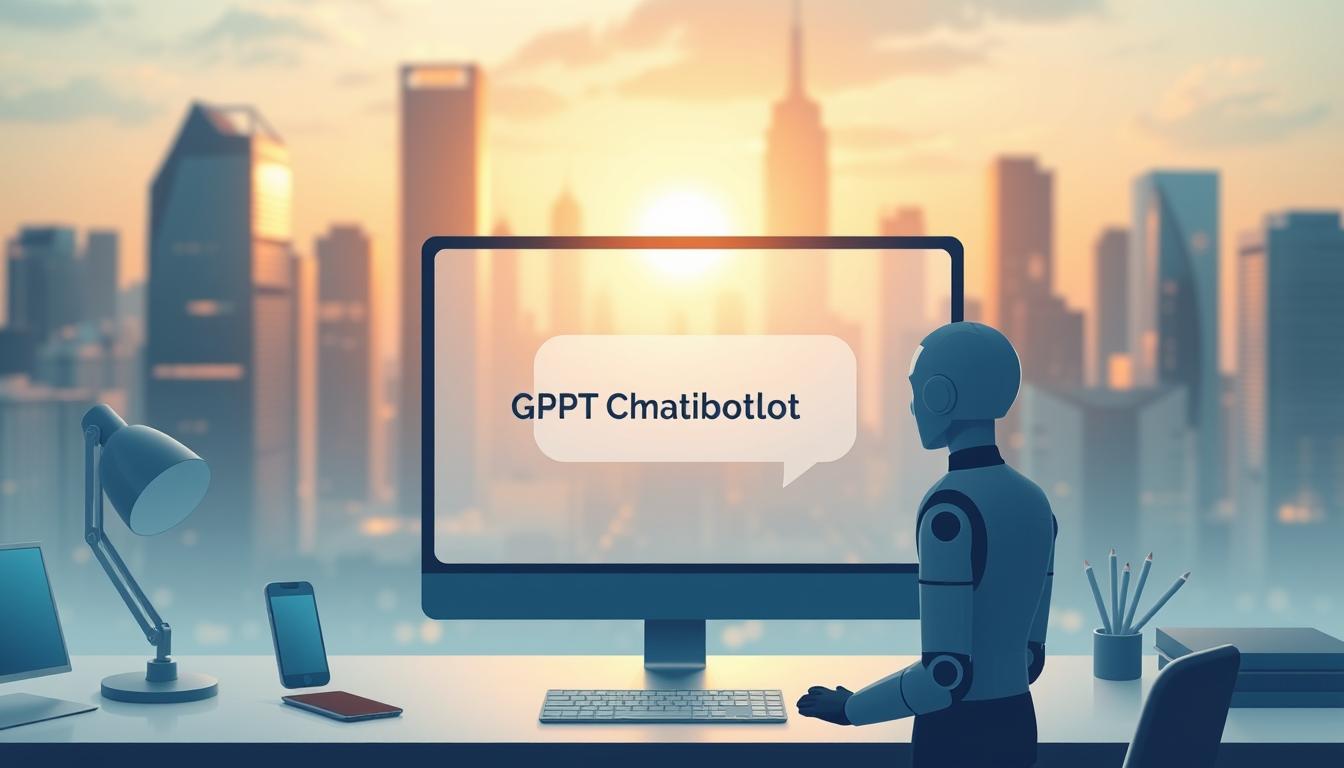The world is witnessing a significant transformation in the way businesses operate, thanks to the rapid evolution of artificial intelligence. According to a 2023 IBM survey, 42% of enterprise-scale businesses have already integrated AI into their operations, while 40% are considering it.
As I explore the current landscape, I’m struck by the sheer number of tools and models available, making it easier for businesses and individuals to harness the potential of AI. The democratization of AI is changing the way we work, create, and solve problems.
With thousands of models at our fingertips, the possibilities are endless. I’ll be examining the current state of AI adoption, its impact on productivity, and what this means for future development.
Key Takeaways
- The rapid evolution of AI is transforming businesses and industries.
- Thousands of AI models are now accessible to businesses and individuals.
- AI adoption is on the rise, with 42% of enterprises already using it.
- The democratization of AI is changing the way we work and create.
- Understanding AI is crucial for businesses to stay competitive.
The Evolution of AI Technology
The evolution of AI technology has been a remarkable journey, transforming from simple rule-based systems to complex machine learning models. This transformation has been driven by significant advancements in machine learning and deep learning, enabling AI systems to learn from data and improve over time.
From Early AI to Modern Machine Learning
Early AI systems were limited by their rule-based approach, which constrained their ability to adapt to new situations. In contrast, modern machine learning approaches allow computers to learn from vast amounts of data, significantly enhancing their capabilities.
The development of neural networks and deep learning algorithms has been instrumental in this progress, enabling AI to accomplish complex tasks that were previously unimaginable. Key milestones in AI development include IBM’s Deep Blue defeating chess grandmaster Garry Kasparov in 1997 and IBM Watson winning Jeopardy! in 2011.
The Rise of Generative AI Models
The recent explosion of generative AI models like GPT and DALL-E has marked a significant shift in AI capabilities, moving from analysis to creation. These models can generate human-like content across multiple modalities, representing a paradigm shift in what AI can accomplish.
The increasing accessibility of these powerful tools is democratizing AI technology across industries, enabling a wide range of applications and innovations.
Current State of AI Tools Landscape
Today’s AI tools landscape is characterized by a proliferation of innovative technologies transforming various sectors. The diversity and specialization emerging in the market are driven by advancements in AI research and development.
Large Language Models (LLMs) are at the forefront of this transformation. Models like GPT-4, Claude, and Gemini are revolutionizing industries through their ability to understand and generate human language. As noted by experts,
“The rise of multimodal AI will be a key AI trend, with organizations using proprietary datasets to train AI tailored to their specific needs.”
Large Language Models Transforming Industries
LLMs are being applied across various sectors, from healthcare to finance, and creative industries to manufacturing. Their natural language processing capabilities enable businesses to automate customer service, generate content, and optimize processes. For instance, in healthcare, LLMs can assist in clinical documentation and patient communication.
Multimodal AI Systems
The emergence of multimodal AI systems represents a significant advancement. These systems can process and generate content across text, images, audio, and video simultaneously, creating more intuitive and powerful tools that mimic human communication patterns. As a result, businesses can leverage these systems for more effective customer interaction and process optimization.

The competitive landscape between open-source and proprietary models is driving rapid innovation and improvement in AI tools. As the market continues to evolve, we can expect to see more sophisticated and specialized AI applications across various industries.
The Future of AI Tools: What’s Coming Next
As we move forward, the future of AI tools will be characterized by increased efficiency, accessibility, and innovation. The AI landscape is rapidly evolving, with developers such as OpenAI and Meta shifting their focus towards smaller, more efficient models.
This trend is driven by the need to improve AI models’ performance while reducing their computational costs. For instance, the development of models like the 11 billion parameter mini GPT 4o-mini has shown that it’s possible to achieve high performance with smaller models.
Smaller, More Efficient Models
The growing interest in smaller models has led to significant advancements in AI efficiency. These models are not only faster and more cost-effective but also capable of being embedded in devices such as smartphones.
As the cost of developing and deploying these models continues to decrease, we can expect to see widespread adoption across various industries. This shift will enable new use cases by reducing latency, improving privacy, and lowering computational costs.
| Model | Parameters | Efficiency |
|---|---|---|
| GPT-4 | Large | Low |
| Mini GPT 4o-mini | 11 billion | High |
| Future Models | Smaller | Very High |
Open Source vs. Proprietary AI Development
The ongoing debate between open-source and proprietary AI development is driving innovation while raising important questions about access, safety, and commercialization.
Open-source AI development allows for community-driven innovation and transparency, while proprietary development enables companies to maintain control over their intellectual property.
AI Accessibility for Non-Technical Users
The growing focus on making AI tools accessible to non-technical users is transforming the way businesses and individuals leverage AI in their work and creative endeavors.
Intuitive interfaces and no-code platforms are democratizing access to AI, enabling users to harness its potential without requiring extensive technical expertise.
As AI continues to evolve, we can expect to see even more innovative applications of AI tools, leading to increased productivity and creativity.
AI Tools Transforming Key Industries
The advent of AI tools is bringing about a paradigm shift in various industries, driving growth and innovation. As AI continues to evolve, its impact on different sectors becomes more pronounced, leading to enhanced efficiency and productivity.
Healthcare and Medical Research
AI is revolutionizing healthcare through diagnostic tools, drug discovery acceleration, and personalized treatment planning. For example, AI-powered algorithms can analyze medical images to detect diseases more accurately and swiftly than human clinicians. This not only improves patient outcomes but also reduces healthcare costs.
Manufacturing and Supply Chain
In manufacturing, AI-powered robots are performing complex assembly tasks with precision, boosting production rates and reducing defects. AI predictive maintenance and quality control are also optimizing supply chain operations, leading to more efficient inventory management.
Finance and Banking
Financial institutions are leveraging AI for fraud detection, algorithmic trading, risk assessment, and personalized banking experiences. AI-driven systems can analyze vast amounts of data to identify patterns and anomalies, enhancing security and reducing risk.
Education and Learning
AI is transforming education through adaptive learning platforms, automated grading, and personalized curriculum development. AI-powered tools can gauge student emotions and detect plagiarism, helping educators tailor their teaching methods to individual needs.
Here’s a summary of AI’s impact across these industries:
| Industry | AI Application | Benefit |
|---|---|---|
| Healthcare | Diagnostic tools, drug discovery | Improved accuracy, reduced costs |
| Manufacturing | AI-powered robots, predictive maintenance | Increased efficiency, reduced defects |
| Finance | Fraud detection, algorithmic trading | Enhanced security, improved risk assessment |
| Education | Adaptive learning, automated grading | Personalized learning, improved student outcomes |

Business Applications of AI Tools
With the rise of AI, companies are discovering new ways to automate tasks, improve customer service, and make data-driven decisions. As AI technology continues to advance, its impact on business operations is becoming more profound.
About 55 percent of organizations have adopted AI to varying degrees, suggesting increased automation for many businesses in the near future. This adoption is transforming business operations across departments and functions, driving efficiency and innovation.
Improved Business Automation
AI is streamlining workflows and reducing manual tasks, allowing employees to focus on higher-value activities. For instance, AI-powered tools can automate document processing, manage complex operational workflows, and handle routine inquiries.
Key Benefits of Business Automation:
- Enhanced productivity
- Reduced operational costs
- Improved accuracy and reduced errors
Customer Service Revolution
AI-powered chatbots and virtual assistants are revolutionizing customer service by providing 24/7 support and personalized experiences. These tools can handle simple conversations with customers, answer basic queries, and even offer tailored recommendations.
Customer satisfaction is improving as businesses leverage AI to provide timely and relevant support. At the same time, operational costs are being reduced as the need for human customer support agents decreases.
Data Analysis and Decision Making
AI’s ability to analyze massive amounts of data and convert findings into convenient visual formats is accelerating the decision-making process. Company leaders can now access instant insights, enabling them to make informed decisions without spending time parsing through data.
| Business Function | AI Application | Benefit |
|---|---|---|
| Customer Service | Chatbots and Virtual Assistants | 24/7 Support, Personalized Experience |
| Data Analysis | Predictive Analytics | Informed Decision Making |
| Operations | Automation Tools | Enhanced Productivity, Reduced Costs |
Creative and Content Generation Tools
The advent of AI has revolutionized the creative landscape, offering unprecedented tools for content generation. As we explore these innovative tools, it’s clear that AI is not only augmenting human creativity but also opening up new avenues for artistic and professional expression.

Text and Content Writing
AI-powered text and content writing tools are transforming the way we create written content. These tools can generate everything from marketing copy to technical documentation, and even creative fiction. For instance, AI can assist in creating personalized emails and posts for marketing purposes, as well as drafting interview questions and job descriptions for talent acquisition.
- Marketing: Creating personalized emails and posts
- Talent: Drafting interview questions and job descriptions
Image and Video Generation
The rise of image and video generation tools like DALL-E, Midjourney, and Runway has been explosive. These tools can create visual content from text descriptions, democratizing visual creation and allowing non-artists to bring their visions to life. For example, stock image generators can produce unique media for marketing and sales, while image editors can personalize content quickly.
- Marketing and Sales: Generating unique media with stock image generators
- Marketing and Sales: Personalizing content quickly with image editors
Audio and Music Creation
AI is also making waves in audio and music creation. Tools that can generate voiceovers, sound effects, and even complete musical compositions are becoming increasingly sophisticated. For instance, text-to-voice generation is being used in trainings to create educational voiceovers, while sound creation tools are being used in entertainment to make custom sounds without copyright violations.
- Trainings: Creating educational voiceovers with text-to-voice generation
- Entertainment: Making custom sounds without copyright violations
Challenges and Risks of AI Advancement
The rapid advancement future of AI tools brings numerous benefits, but it also poses significant challenges and risks that need to be addressed. As AI becomes increasingly integrated into various industries, it’s crucial to understand the potential downsides of this emerging technology.

Job Disruption and Workforce Transformation
One of the most significant risks associated with AI advancement is job disruption. Between 2023 and 2028, 44 percent of workers‘ skills will be disrupted, according to recent projections. Not all workers will be affected equally, with women more likely than men to be exposed to AI in their jobs. This disparity highlights the need for targeted training programs to help workers adapt to changing job requirements.
Data Privacy and Security Concerns
The increasing reliance on AI systems raises significant concerns about data privacy and security. As AI models require vast amounts of data for training and operation, the risk of data security breaches grows. Training AI models on public data increases the chances of exposing consumers’ personal information.
Ethical Considerations and Bias
AI development also raises important ethical considerations, including issues of bias, fairness, and transparency in algorithmic decision-making. Ensuring that AI systems are designed with ethical principles in mind is crucial for maintaining public trust in these technologies.
Deepfakes and Misinformation
The spread of deepfakes and AI-generated misinformation poses a significant threat to the integrity of information. As deepfakes become more sophisticated, it becomes increasingly challenging for the general public to distinguish between reality and fiction. This blurring of lines could have a profound impact on trust in media and potentially dangerous consequences for individuals and entire countries.
In conclusion, while AI advancement holds great promise, it’s essential to acknowledge and address the associated risksand challenges. By doing so, we can work towards a future where the benefits of AI are realized while minimizing its negative impact on society.
The Regulatory Landscape for AI Tools
Regulatory bodies are now focusing on creating comprehensive guidelines for the development and deployment of AI tools. As AI technology continues to advance, governments and organizations worldwide are working to establish frameworks that ensure the safe and ethical use of these systems.
Current and Emerging AI Regulations
The development of AI regulations is gaining momentum, driven by frameworks such as the EU AI Act. A key aspect of these regulations is the classification of AI systems into risk tiers, with stricter requirements imposed on high-risk AI. For instance, AI models used in healthcare, finance, and critical infrastructure sectors will need to meet rigorous standards for transparency, robustness, and cybersecurity. The table below summarizes the potential risk tiers and corresponding regulatory requirements.
| Risk Tier | AI Application | Regulatory Requirements |
|---|---|---|
| High Risk | Healthcare, Finance, Critical Infrastructure | Transparency, Robustness, Cybersecurity Standards |
| Medium Risk | Customer Service, Education | Data Protection, Accountability |
| Low Risk | Entertainment, General Information | Basic Compliance, Ethical Guidelines |
Balancing Innovation with Safety
One of the primary challenges in regulating AI is striking a balance between fostering innovation and ensuring safety and ethical use. Regulators must be careful not to stifle development while protecting users from potential risks. This delicate balance will be crucial in shaping the future of AI tools and their impact on society.
As AI continues to evolve, regulatory frameworks will need to adapt to address new challenges and concerns. By understanding the current and emerging regulatory landscape, developers, businesses, and users can better navigate the complex environment surrounding AI tools.
Conclusion: Embracing the AI-Powered Future
Embracing AI is not just about adopting new technology; it’s about reimagining our capabilities and the future we want to create. As we’ve explored throughout this article, AI tools are becoming increasingly accessible and powerful, transforming industries and revolutionizing the way we work and live.
The potential of artificial intelligence to boost productivity, enhance customer service, and drive business growth is vast. However, it’s crucial to balance our enthusiasm with thoughtful consideration of the challenges and limitations that come with AI development and implementation.
To prepare for an AI-powered future, individuals and organizations must focus on skills development, ethical frameworks, and strategic implementation. By doing so, we can harness the benefits of AI while minimizing its risks. The future of AI is not just about automation; it’s about augmenting human capabilities to achieve greater efficiency and productivity.
As we move forward, it’s essential to engage thoughtfully with these powerful technologies, ensuring that their development and use maximize benefits while mitigating risks. By embracing this future, we can unlock new opportunities and create a more prosperous and sustainable world.
FAQ
What are the benefits of using machine learning in business applications?
I believe that machine learning can greatly improve business efficiency by automating tasks, enhancing customer service, and providing valuable insights through data analysis.
How do large language models impact natural language processing?
In my opinion, large language models have revolutionized natural language processing by enabling more accurate and efficient processing of human language, which has numerous applications in areas like customer service and content generation.
What are the potential risks associated with the development of multimodal AI systems?
I think that multimodal AI systems pose risks related to data privacy and security concerns, as they can process and generate vast amounts of sensitive information, including images, videos, and audio.
How will smaller, more efficient models change the AI landscape?
From my perspective, smaller, more efficient models will make AI more accessible to a wider range of users and industries, as they require less computational power and data to operate effectively.
What is the difference between open source and proprietary AI development?
I understand that open source AI development allows for community-driven development and transparency, while proprietary AI development is typically controlled by a single entity and may be more secure, but less transparent.
How can AI tools improve customer service?
In my view, AI tools can enhance customer service by providing 24/7 support through chatbots and other automated systems, allowing human customer support agents to focus on more complex issues.
What are the potential ethical considerations when using AI in content generation?
I believe that AI-generated content raises ethical concerns related to authorship, ownership, and the potential for misinformation or deepfakes, which must be carefully considered and addressed.





